The characteristic Culture of Ethiopian Coffee an introduction to the Flavor characteristics of Coffee beans from France and Ethiopia
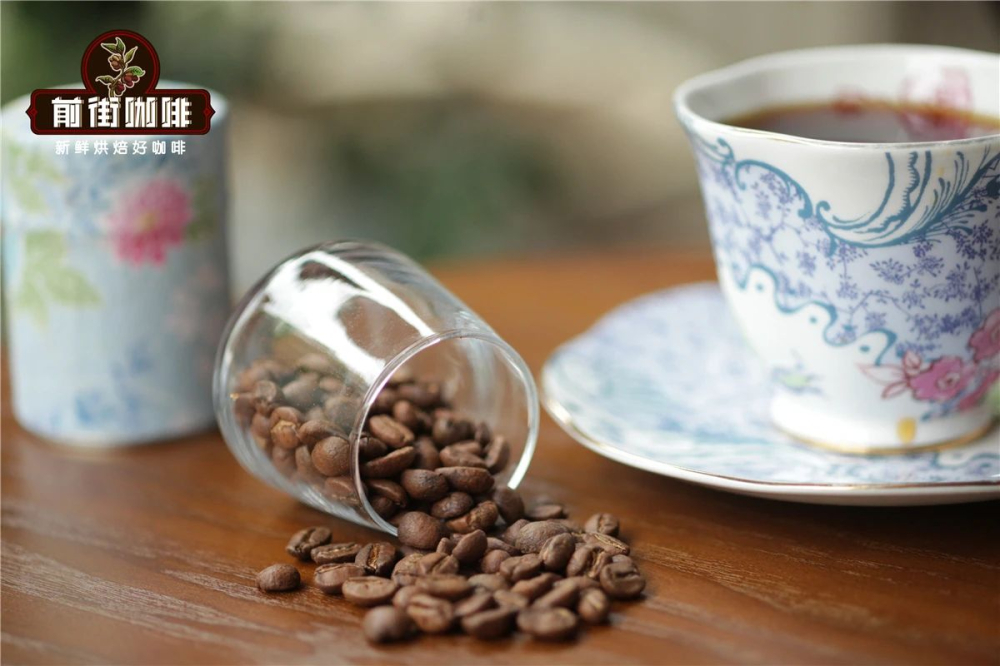
Nowadays, coffee is a very popular drink both at home and abroad, and in Ethiopia on the African continent, coffee also represents their culture and beliefs. In Ethiopia, regardless of whether rich or poor, the coffee ceremony has become an integral part of the social family, every social gathering, there will be a respectful coffee ceremony.
The traditional coffee ceremony in Ethiopia
According to legend, in the highlands of Ethiopia in Africa, a shepherd Carl was grazing when he accidentally found his goat excited by eating some wild red fruit. Curious, he also picked some to taste at home. After eating, he felt refreshed and excited, so he shared them with the villagers. As the news spread, coffee beans came to the Arabian Peninsula, cultivation and trade gradually began, and coffee beans began a global journey that lasted for hundreds of years.
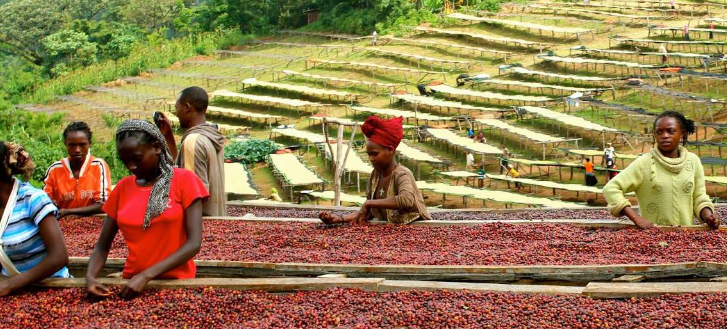
Although the story may not be completely true, the Ethiopian have a tradition of drinking coffee since ancient times. A cup of strong coffee in the morning can start a refreshing day. Every corner of the village is always filled with the smell of coffee. Here, the Ethiopian people well retain the original purity of the coffee. They use the most primitive iron pestle to grind the charcoal-roasted coffee beans into powder and put them into the coffee pot. The boiled coffee slowly emits a unique aroma and tastes with traditional bread.
The Ethiopians have a very long coffee ritual in which coffee beans are roasted in a pan, then mashed with a pestle and mortar, and then boiled in a clay pot called "Jebena". When the hot water mixed with coffee grounds boils, it means the coffee is ready to taste. The coffee ceremony is divided into three rounds, the first cup is Abol, when the elders want to say blessings; the second cup is Tona, people begin to chat about their parents, and the third cup of Beraka symbolizes joy.
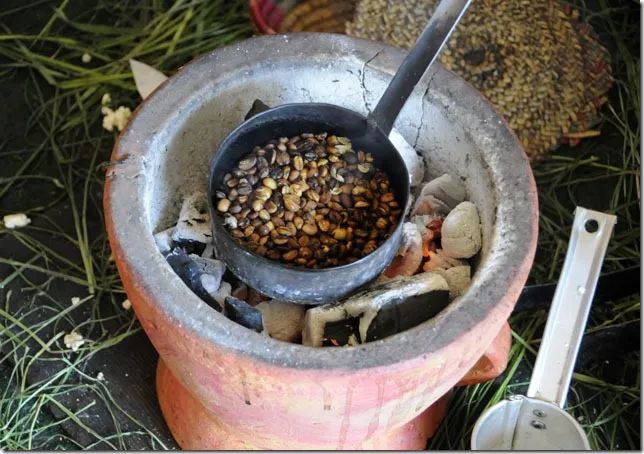
It is worth mentioning that in the Ethiopian language, coffee is "bunn" or "buna". The origin of coffee is Kaffa. So coffee is sometimes called "Kaffa bunn", or coffee from Kaffa. Therefore, the word "coffee bean" is generally regarded as the English version of "Kaffa bunn". The English coffee (coffee) is derived from the place name "kaffa" of Ethiopia.
Ethiopia is mainly based on the pastoral coffee planting model.
The uplift of Ethiopia forms an excellent climatic environment, with a tropical rain forest climate, abundant rainfall and fog, and a significant temperature difference at an ultra-high altitude of about 2,000 meters, providing a unique environment for coffee trees to grow.
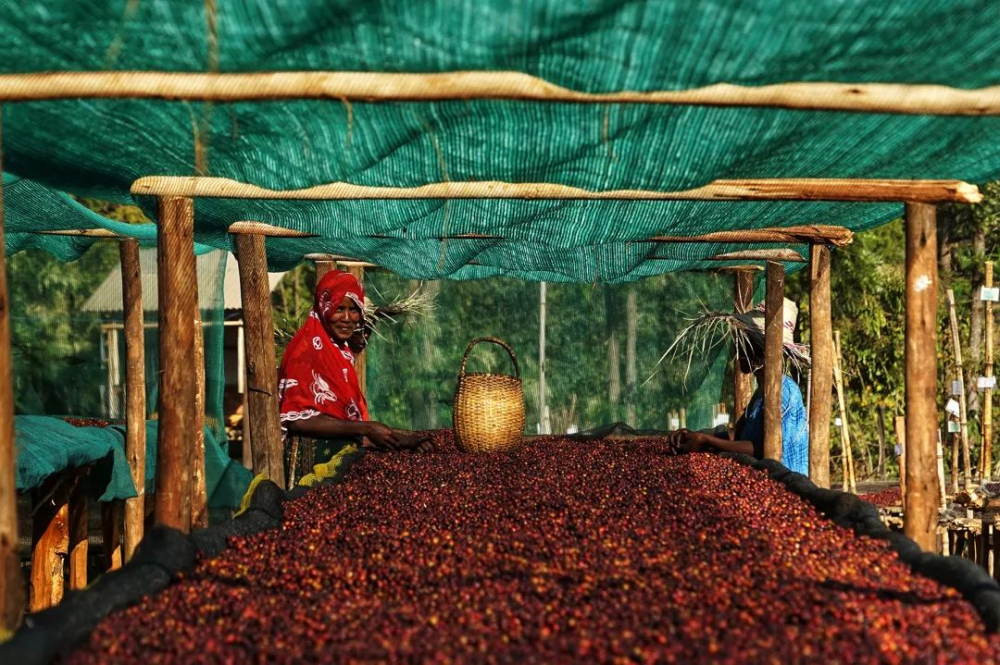
Local coffee production patterns are divided into four types: forest coffee, semi-forest coffee, pastoral coffee and large plantations, of which pastoral coffee is the most common. The so-called pastoral coffee refers to the mixed management of coffee trees and other economic crops in their own fields, usually planted with banana trees, which forms a unique green landscape in front and backyard of every house. this is the main mode of production in Ethiopia.
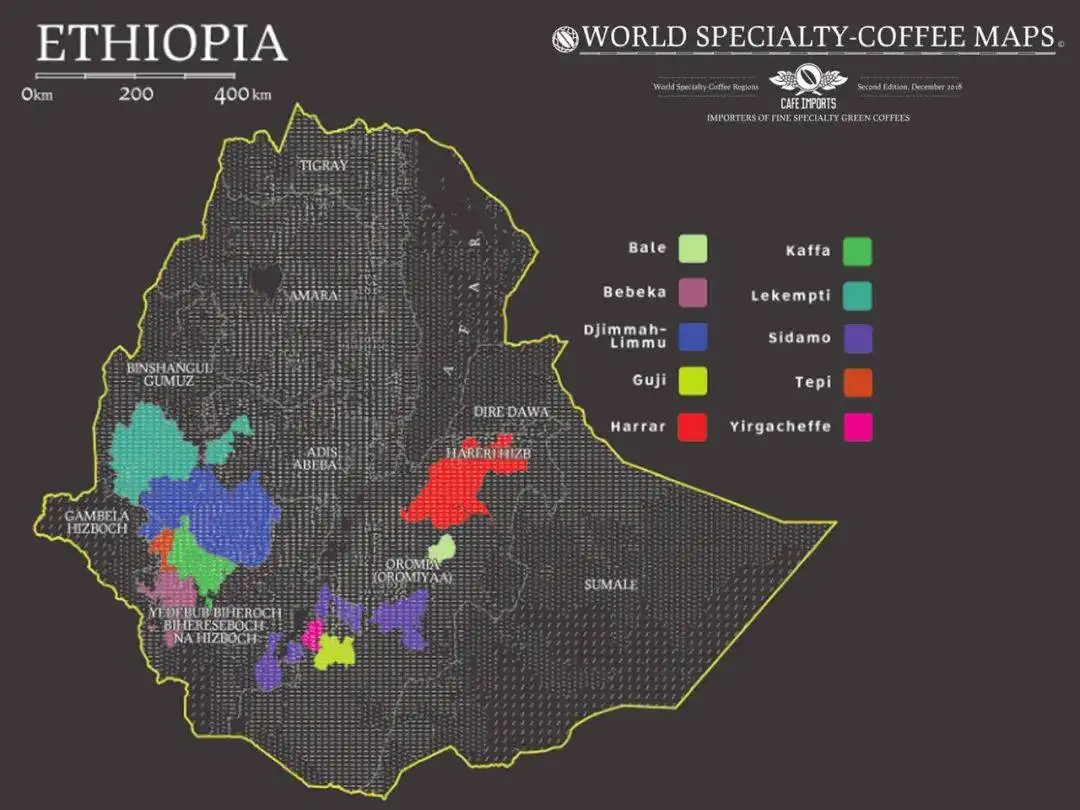
Administratively, coffee is grown in five major states in Ethiopia, and the four major planting systems are distributed in the following nine major producing areas of Ethiopia: Jinma, Sidamo, Yegashefi, Hara, Lim, Iruba, Kinby (Lekanti), Tibby, and Bebeca. Yega Chefe Coffee, Harald Coffee and Sidamo Coffee are the most well-known. Yega Chuefei is a very small town, but it produces thousands of tons of fine coffee every year, which shows that Yega Chuefei plays an important role in Ethiopia.
Due to the small output of coffee planted by small farmers, there will be local coffee cooperatives and processing plants, which are mainly responsible for the handling of raw coffee beans in the region. Farmers send their harvested coffee beans to nearby treatment plants (cooperatives) built by water sources for unified treatment, which will then be sold in the name of the treatment plant. For example, the Guoding cooperative coffee beans on the Qianjie bean list collect coffee beans grown in the town of Yejassefi, send them to the town for unified washing treatment, and then produce them in the name of the cooperative.
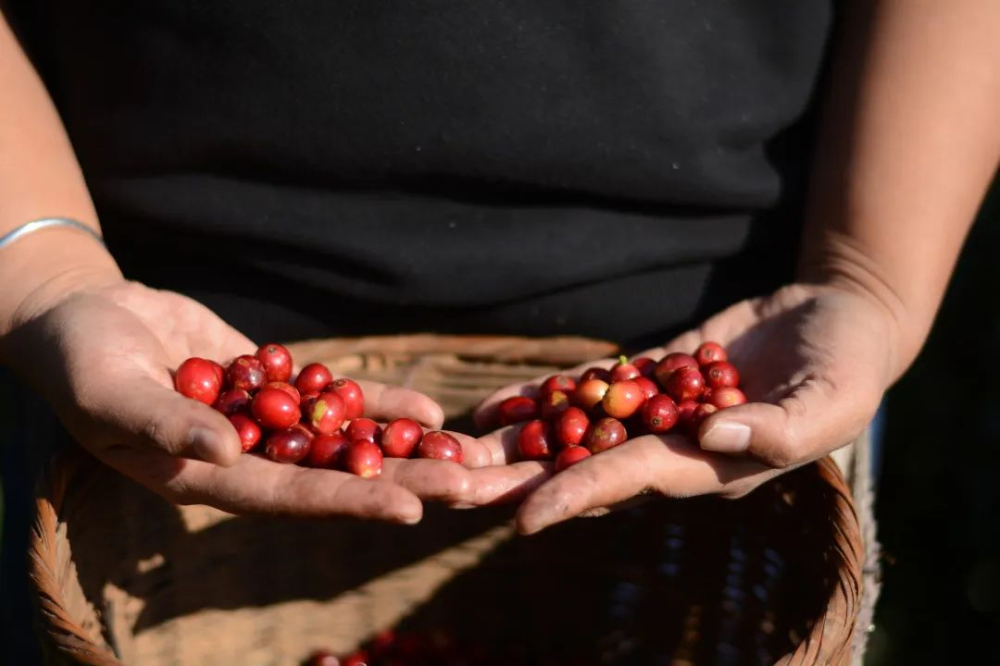
The difference between washed coffee and sun-cured coffee
Ethiopia generally has a high altitude and plenty of sunshine, so it is quite suitable for drying coffee fruits in the sun. The traditional sun treatment is too rough, each coffee farmer can be carried out in his own yard, will be directly spread on the roof, the ground drying, rough methods have brought a lot of unpleasant taste, but also caused uneven coffee quality.
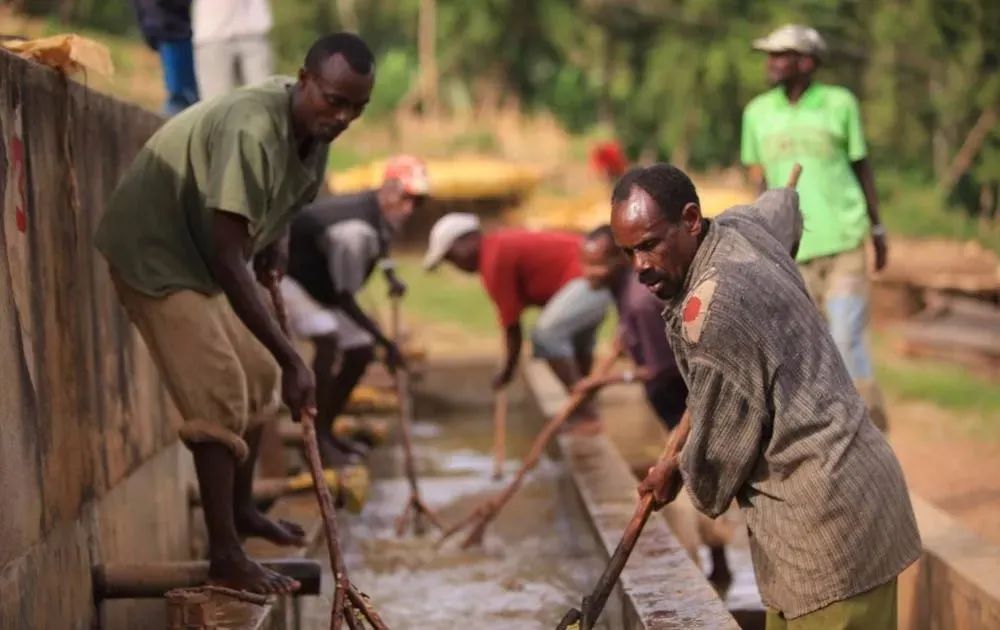
The Ethiopian government introduced more advanced washing technology and related equipment from Central and South America in 1972. Farms that use the washing method must build washing ponds and be able to introduce an endless supply of running water, resulting in higher production costs. During the treatment, put the mellow beans into the pool and pass them back and forth, using the friction of the beans and the power of running water to wash the coffee beans until smooth and clean. Impurities and defective beans are removed in each step, so the quality of raw beans is more uniform, and the final transaction price is higher than that of natural drying coffee. Washing not only greatly reduces the defect rate of coffee, but also wins Yega Xuefei fresh citrus tone and elegant white flower aroma, with a bright, delicate and clean overall flavor.
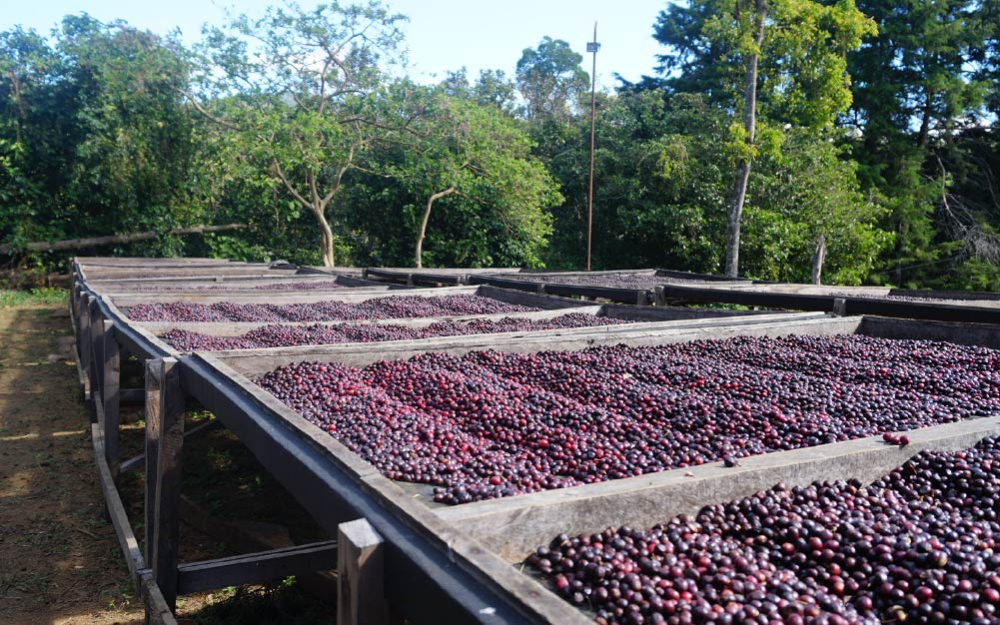
Although washed coffee has become popular for a time, sun treatment still accounts for the main part of Ethiopian coffee. Unlike in the past, today's sun treatment pays more attention to manual screening and ensuring uniform drying. Freshly pick coffee red fruit, through manual screening, pick out defective beans and overripe or moth-eaten ones, leaving good beans. Then sent to the drying place for drying treatment, of course, different production areas use different drying racks, some will be tarpaulins, high beds, etc., the most common is the African-style drying bed, the drying time is generally 27-30 days, until the coffee turns dark purple, the moisture content is reduced to 11%.
The Fruit Ding Cooperative coffee beans on the Qianjie bean list are Yejia Xuefei treated with classic washing, and another red cherry coffee bean is Yega Xuefei treated with exquisite sun treatment, which is stronger and more layered, with a fuller sense of fermentation and tropical fruit flavor, and a higher sense of sweetness.
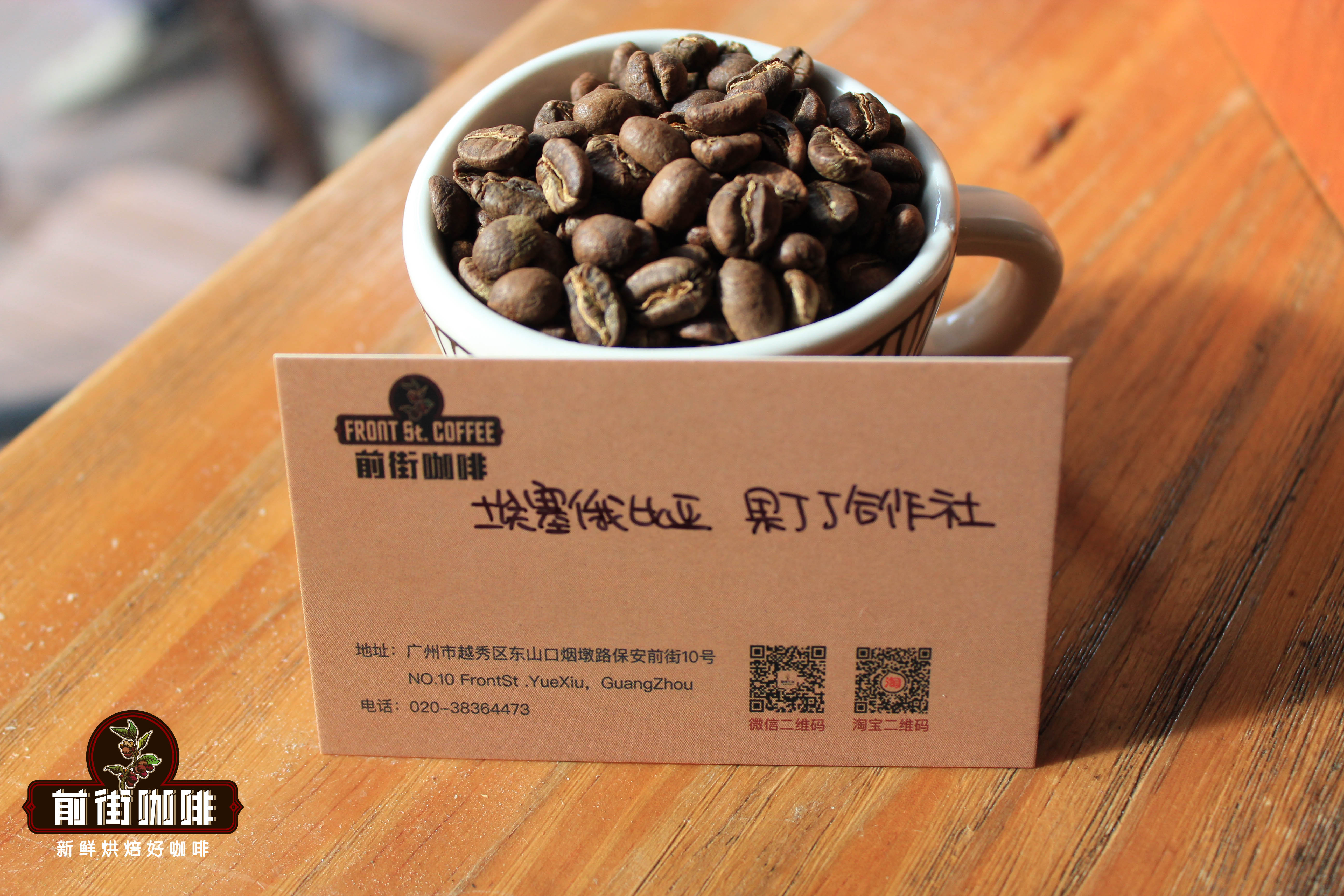
Flavor characteristics of Ethiopian Coffee
As a star product of African coffee, Essex beans have become an entry-level product for many people because of their rich floral aroma, fresh citrus flavor and clear and transparent taste. Qianjie, as a fan of flower-and-fruit-flavored coffee, has a variety of Ethiopian coffee beans on the bean list, of which the most representative is the washed fruit Tintin Cooperative, Sun Red Cherry, Sidamo Sakuran and Ethiopian Coffee.
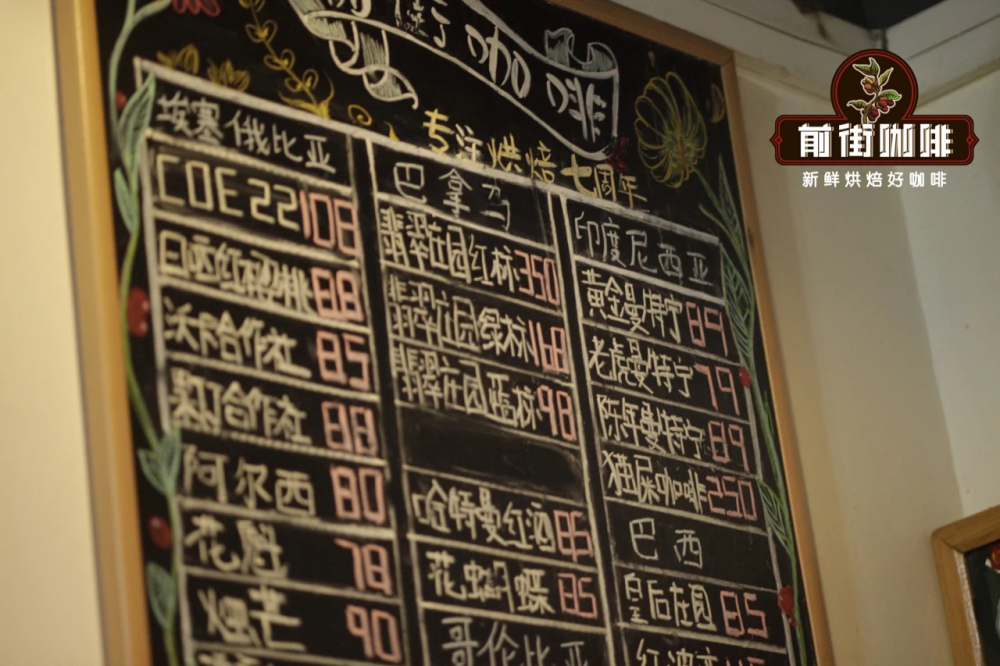
Among the guests who come to Qianjie for coffee, if they want to drink washed fruit-blended coffee, Qianjie baristas will give priority to the diced fruit cooperative on the bean shelf; if they want full and round fruit sweetness, Qianjie thinks that sun-tanned cherries are more suitable; if you want to feel the fermented aroma of tropical fruits, Qianjie is Huakui coffee beans from Amlie Xida Mohambela.
Qianjie believes that Ethiopian coffee is mainly represented by fruit acidity, which is more suitable for medium-light baking, highlighting sweetness while retaining more flower aroma and fruit sour taste.
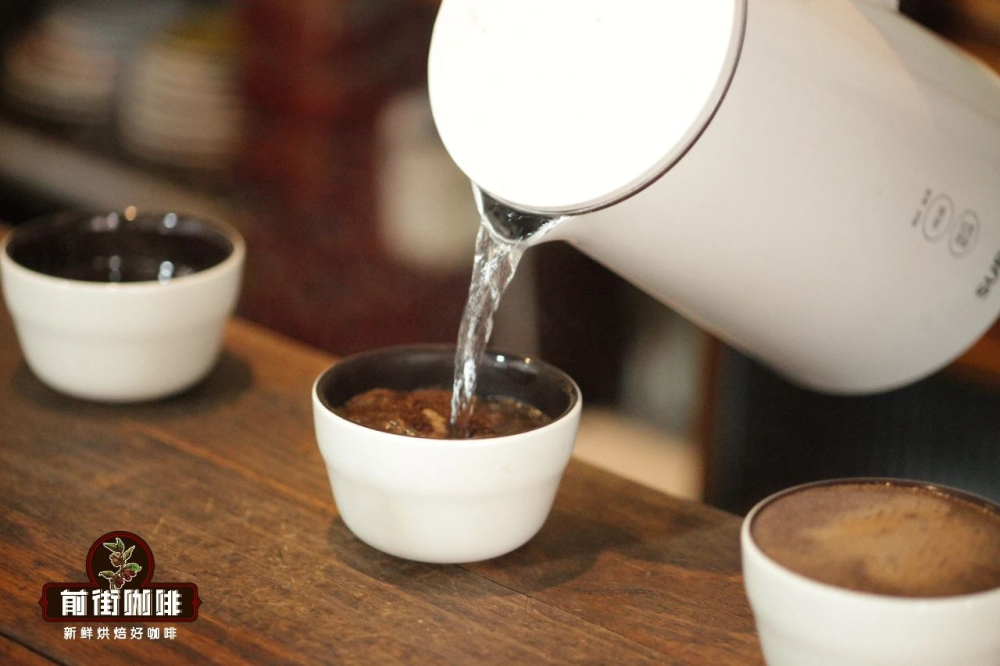
The cup tests the flavor:
The dry aroma of washed fruit Ding Ding cooperative coffee exudes fresh aromas of passion fruit, citrus and berries. Wet aroma is the acidity of citrus, berries, imported citrus, sweet berries, almonds, tea, with honey sweetness in the finish. Alcohol thickness is low, acidity is bright, clean and refreshing.
The dry aroma of sun red cherry coffee shows full sweet and sour berries, sucking at different temperatures, soft sweet and sour berries, fermented ripe fruit, obvious honey sweetness and black tea tail, smooth taste.
Sun-dried Sidamo Sakuran coffee has nutty, honey, berry and light fermented aromas, with full sweet and sour flavors of passion fruit, cream and strawberries on the palate, and a thick body with a cocoa finish.
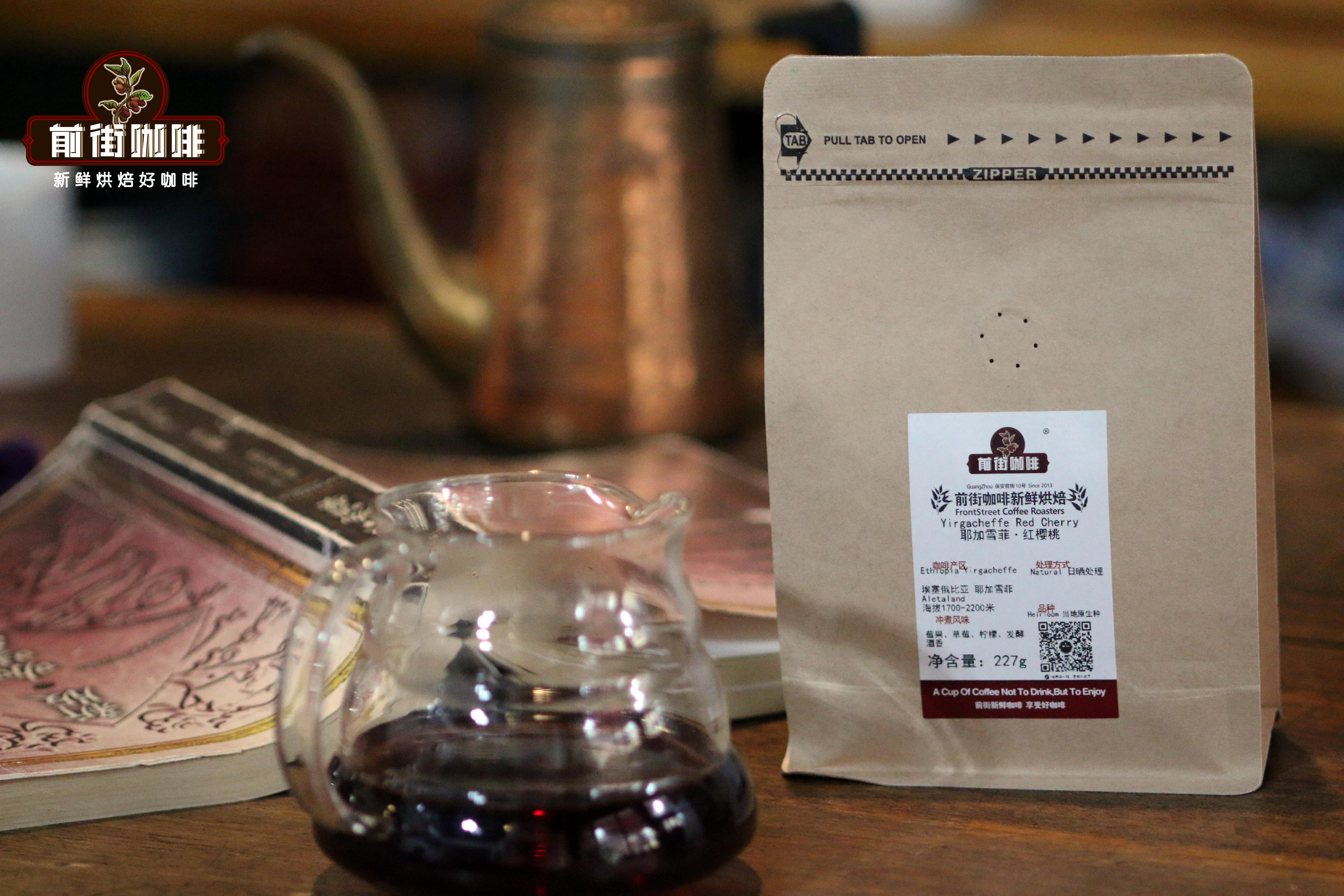
Recommended coffee beans with Ethiopian flavor
If you are a newcomer to the beginner of boutique coffee, Qianjie recommends starting with this washed Yega Xuefei rations. Qianjie believes that Yega Xuefei is synonymous with Ethiopian boutique coffee, and washing fully shows Yega's charm, so it is used as the "facade representative" of Ethiopian coffee, so that everyone can have a taste of Ethiopian flavor.
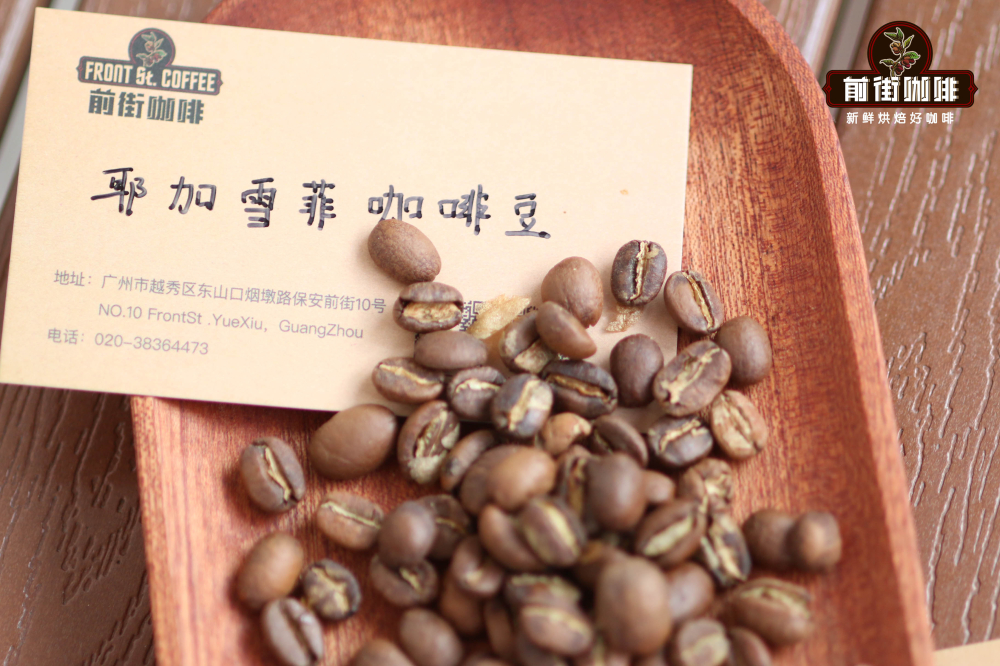
Qianjie's rations bean series allows friends who have just come into contact with coffee circles to taste the basic flavor of the producing area at an affordable price, and the design of small packages can also avoid endless waste. If you want to taste the classic aroma of Yega Chuefei, Qianjie thinks the black coffee extracted by hand is the best. In order to ensure the freshness of the coffee beans, the coffee beans shipped in front of the street are freshly roasted within 5 days and can usually be received in 1-3 days, so that everyone can start to delve into how to extract the coffee beans within the best taste period.
The front street hand rushed the suggestion.
Filter cup: V60 water temperature: 92-93 degrees Celsius powder: 15g powder-water ratio: 1:15 Grinding degree: fine sugar size (No. 20 sieve bowl sieve powder to 78%)
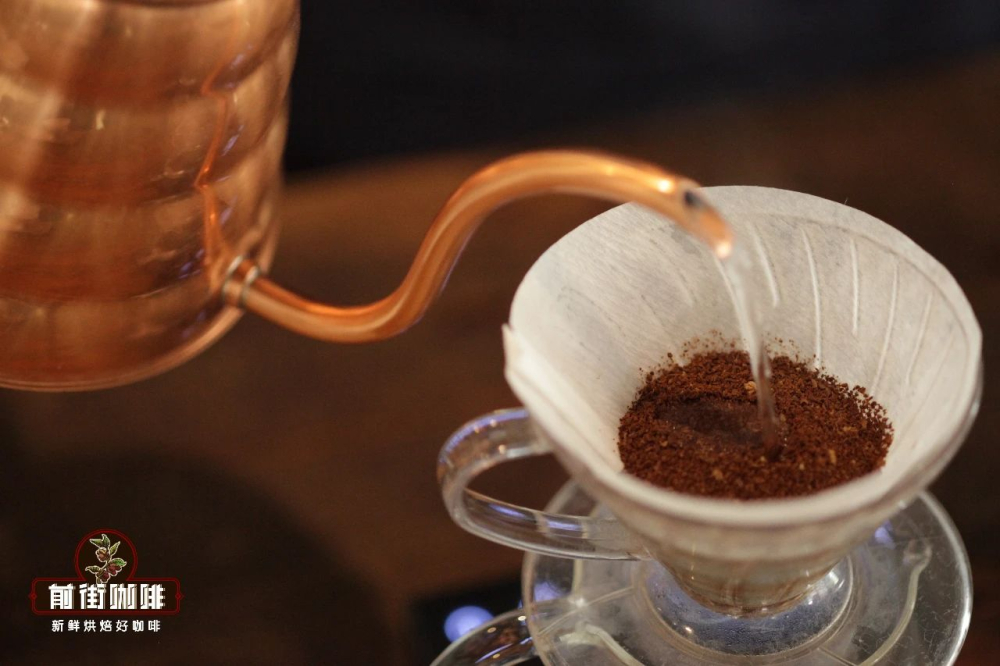
Three-stage water injection: wet the powder bed with twice as much water as coffee powder to form a drum and steam for 30s, then fill the small water from the inside to the outer circle to 125g, wait for the powder bed to drop to half of the filter cup, and continue to inject the same fine water into the third section to 225g, until all the coffee liquid has been filtered and remove the filter cup for about 2 minutes.
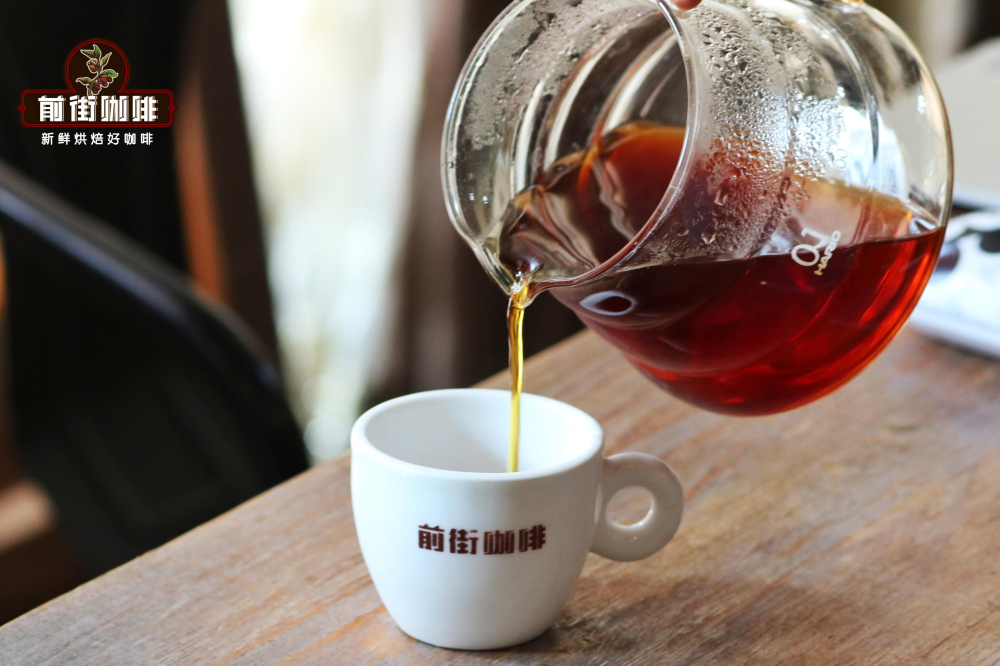
After being ground into powder, the washed Yejiaxefi rations bean coffee can smell the fragrance of honey and jasmine. After hot water is injected into the current street, it begins to give off a hint of berry flavor. The entrance of the black coffee is bright lemon, citrus and green tea. With the change of temperature, there are raspberry, cream and sugar cane aftertaste.
Professional coffee knowledge exchange more coffee bean information please follow the coffee workshop (Wechat official account cafe_style)
For more boutique coffee beans, please add private Qianjie coffee on Wechat. WeChat account: qjcoffeex
Important Notice :
前街咖啡 FrontStreet Coffee has moved to new addredd:
FrontStreet Coffee Address: 315,Donghua East Road,GuangZhou
Tel:020 38364473
- Prev

The variety of coffee beans with a variety of raw beans.
Coffee is the first tropical economic crop in the world in terms of output, consumption and economic value. it is the second raw material product after international commercial relay oil, and it is also one of the largest tropical food raw materials in the world. Coffee Variety Garden covers an area of 3 mu, which mainly lies in the collection and retention of coffee variety capital, based on the observation of its botanical and biological characteristics.
- Next

Introduction to the three kinds of common coffee beans
At the moment, the development of coffee plant species in different regions of the world mainly include the following: ARABICA/ROBUSTA/LIBERICA/DEWEVREI/STENOPHILLA/CONGENSIS/ABEOKUTAS/KLAINII/ZAANGUEBARIAE/RACEMOSA. Among them, the most commonly used coffee is divided into three categories: small seed coffee beans (Arabica) and medium seed coffee beans (Robusta).
Related
- Guji coffee producing area of Guji, Ethiopia: Humbela, Shakiso, Wulaga
- What is the most expensive variety of Qiloso in BOP multi-variety group?
- How to store the coffee beans bought home?
- Why are Yemeni coffee beans so rare now?
- Ethiopian Sidamo all Red Fruit Sun Sun Santa Vini Coffee beans
- SOE is mostly sour? What does it mean? Is it a single bean? what's the difference between it and Italian blending?
- Is Italian coffee beans suitable for making hand-brewed coffee?
- How to choose coffee beans when making cold coffee? What kind of coffee beans are suitable for making cold coffee?
- Just entered the pit to make coffee, what kind of coffee beans should be chosen?
- Can only Japan buy real Blue Mountain Coffee? What are authentic Jamaican Blue Mountain coffee beans?

